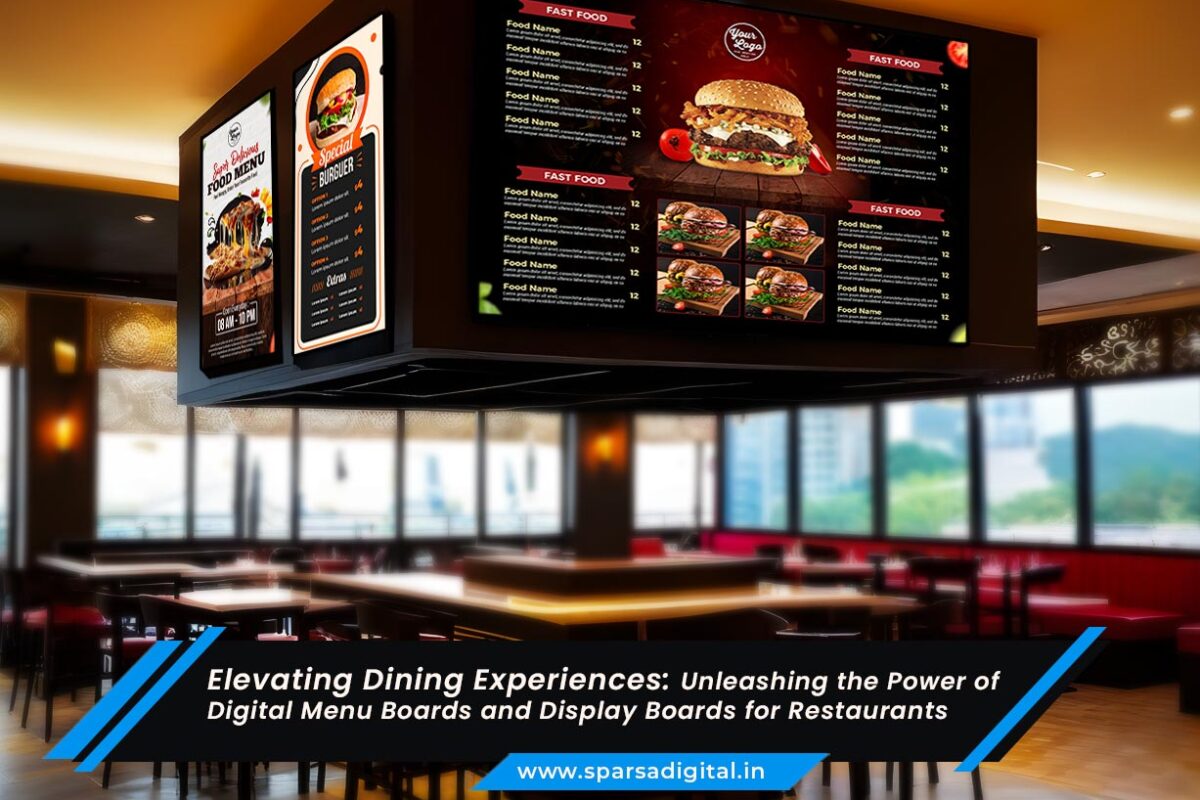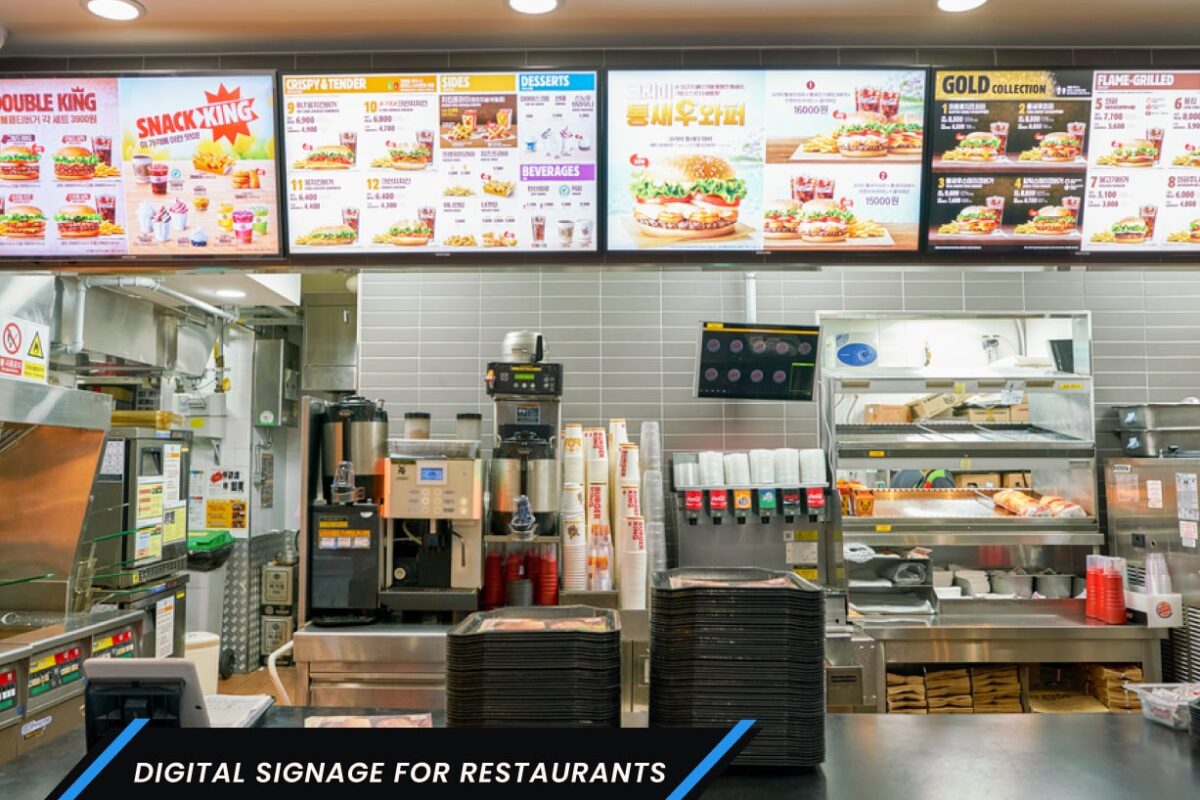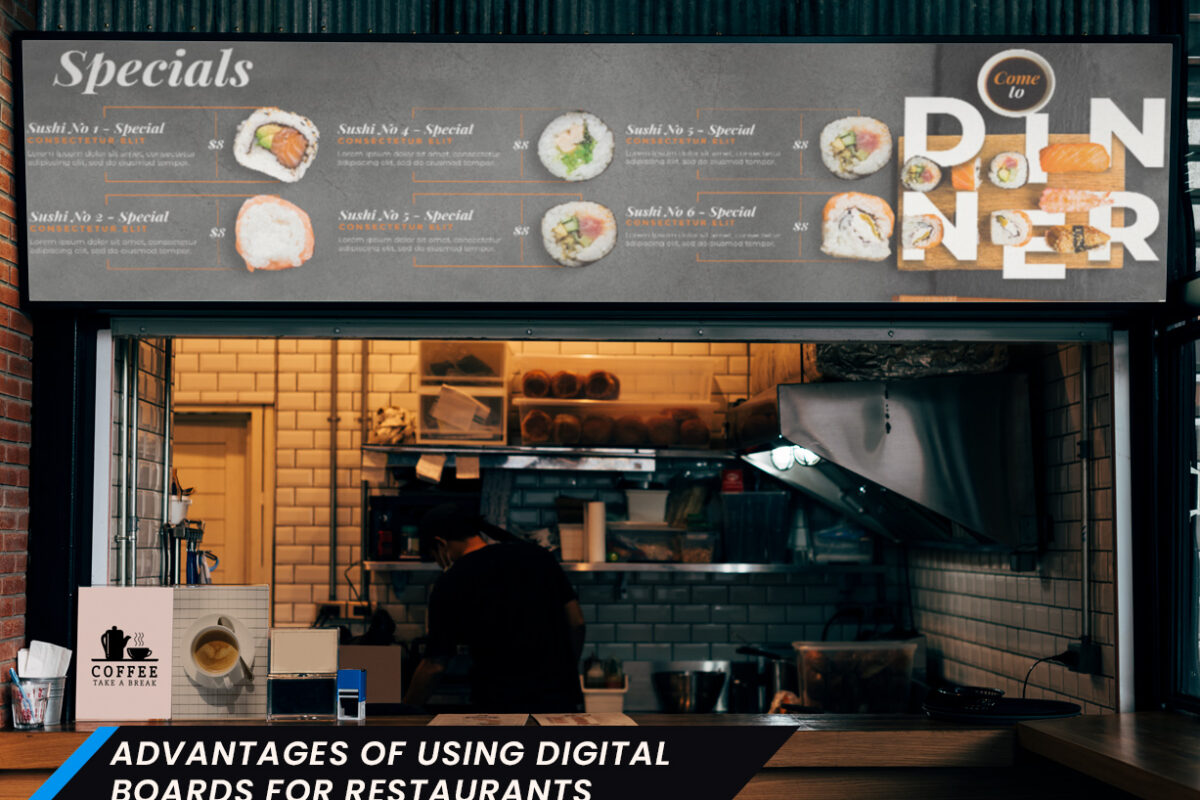Elevating Dining Experiences:
In the fast-paced digital age, the restaurant industry is witnessing a revolution in the way it presents and manages menus and displays. Traditional static menus are being replaced by innovative digital menu boards and display boards, ushering in a new era of efficiency, engagement, and enhanced customer experiences. In this comprehensive blog post, we will delve into the multifaceted applications of digital menu boards and display boards in restaurants, exploring their advantages, creative possibilities, and the transformative impact they have on the dining landscape.
The Digital Menu Boards Advantage:
A. Dynamic Content and Real-Time Updates
Traditional printed menus are static, making it challenging for restaurants to adapt to changes in real-time. Digital menu boards, however, offer dynamic content that can be updated instantly. This allows restaurants to make changes to their offerings, prices, and promotions with just a few clicks, ensuring that customers always have access to the latest information.
B. Interactive Elements for Customer Engagement
Digital menu boards open up new avenues for customer interaction. Incorporating interactive elements such as touchscreens or QR codes allows patrons to explore detailed information about dishes, view images, and even place orders directly from the table. This not only enhances the overall dining experience but also empowers customers with more control over their choices.
C. Integration with POS Systems
The seamless integration of digital menu boards with Point-of-Sale (POS) systems streamlines the ordering process. Orders placed through the digital menu are transmitted directly to the kitchen, reducing the chances of errors and improving order accuracy. This integration enhances operational efficiency, allowing staff to focus on providing exceptional customer service.
Transformative Visual Displays:
A. Captivating Imagery and Videos
One of the most significant advantages of digital display boards is the ability to showcase visually stunning content. High-resolution images and videos of dishes can be displayed, tantalizing customers’ taste buds and influencing their choices. This visual appeal adds a layer of sophistication to the dining environment, creating a more memorable experience for patrons.
B. Promotions and Specials
Digital display boards serve as dynamic platforms for promoting specials, discounts, and upcoming events. Restaurants can schedule specific promotions for different times of the day, enticing customers with targeted offers. This flexibility allows establishments to optimize their marketing strategies, driving sales during peak hours and promoting specific menu items.
C. Customization for Themes and Seasons
Restaurants can easily customize digital display boards to align with different themes or seasonal changes. Whether it’s a festive holiday menu, a seasonal promotion, or a themed event, digital display boards provide the flexibility to adapt the visual elements accordingly. This adaptability helps restaurants stay fresh and relevant, catering to changing customer preferences and expectations.
Operational Efficiency and Cost Savings:
A. Reduced Printing Costs and Waste
Traditional printed menus incur ongoing costs for design, printing, and reprinting whenever there are changes. Digital menu boards eliminate these expenses by allowing instant updates at minimal costs. This not only saves money but also contributes to environmental sustainability by reducing paper waste.
B. Streamlined Order Processing
The integration of digital menu boards with POS systems accelerates order processing. Orders are transmitted directly to the kitchen, minimizing the need for manual order entry. This streamlining of operations not only reduces the likelihood of errors but also enhances the overall efficiency of restaurant staff.
C. Data-Driven Decision Making
Digital menu boards generate valuable data on customer preferences, popular dishes, and sales trends. Analyzing this data provides actionable insights for restaurants to optimize their menu, pricing strategy, and promotional efforts. Informed decision-making based on real-time data contributes to long-term success and competitiveness in the market.
Overcoming Challenges and Ensuring Success:
A. Technical Challenges and Training
Implementing digital menu boards and display boards may pose initial technical challenges. Ensuring that staff members are adequately trained to operate and troubleshoot these systems is crucial. Providing ongoing support and training helps mitigate technical issues, ensuring a seamless transition to digital solutions.
B. Design Considerations for Readability
While the visual appeal is essential, ensuring that digital menus are readable and accessible is equally important. Factors such as font size, color contrast, and layout play a crucial role in enhancing readability. Striking the right balance between aesthetics and practicality is key to creating an effective digital menu.
C. Regular Content Updates
To maximize the impact of digital menu boards and display boards, it’s essential to keep content fresh and relevant. Regularly updating images, promotions, and seasonal offerings maintains customer interest and ensures that the digital displays remain an effective marketing tool. Establishing a content update schedule is vital for sustained success.
The Future of Dining:
A. Integration of AI and Personalization
The future of digital menu boards holds exciting possibilities with the integration of Artificial Intelligence (AI). AI algorithms can analyze customer preferences, order history, and behavior to provide personalized recommendations. This level of customization enhances the dining experience, making it more tailored to individual tastes.
B. Augmented Reality (AR) Enhancements
As technology continues to advance, the integration of augmented reality (AR) into digital menus is on the horizon. AR can overlay additional information, such as nutritional facts or interactive elements, onto the physical dining space, creating a more immersive and informative experience for customers.
C. Sustainability Initiatives
Restaurants are increasingly adopting sustainable practices, and digital menu boards align with this trend. As more establishments prioritize eco-friendly solutions, the reduced reliance on paper and the energy-efficient nature of digital displays contribute to sustainability goals.
Conclusion
In conclusion, the adoption of digital menu boards and display boards in restaurants represents a pivotal shift in the industry, offering a myriad of benefits ranging from enhanced customer experiences to operational efficiency and cost savings. The dynamic nature of digital solutions not only meets the demands of the modern consumer but also positions restaurants for future advancements in technology. As the dining landscape continues to evolve, embracing digital innovation becomes not just a choice but a strategic imperative for restaurants aiming to thrive in a competitive and tech-driven market.



